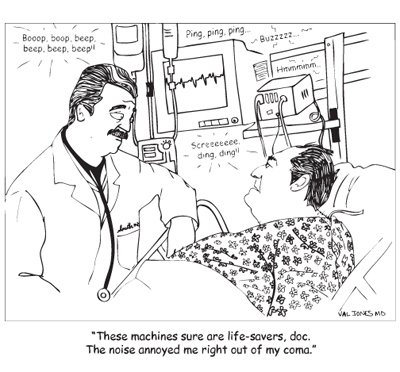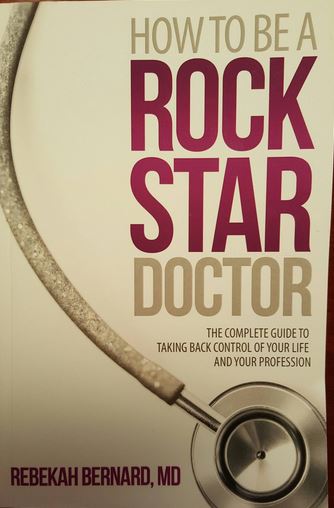February 23rd, 2011 by KevinMD in Health Policy, Opinion
No Comments »

There are plenty of reasons why medical students aren’t choosing primary care as careers. Lack of role models. Perception of professional dissatisfaction. High burnout rate among generalist doctors. Long, uncontrollable hours.
But what about salary? Until now, the wage disparity between primary care doctors and specialists has only been an assumed reason; the evidence was largely circumstantial. After all, the average medical school debt exceeds $160,000, so why not go into a specialty that pays several times more, with better hours?
Thanks to Robert Centor, there’s a study published in Medscape that shows how money affects career choice among medical students. Here’s what they found:
Sixty-six percent of students did not apply for a primary care residency. Of these, 30 percent would have applied for primary care if they had been given a median bonus of $27,500 before and after residency. Forty-one percent of students would have considered applying for primary care for a median military annual salary after residency of $175,000.
And in conclusion:
U.S. medical students, particularly those considering primary care but selecting controllable lifestyle specialties, are more likely to consider applying for a primary care specialty if provided a financial incentive.
Money matters. There should be no shame for new doctors to admit that. After all, they’re human too, and respond to financial incentives just like anyone else. And when most medical students graduate with mortgage-sized school loans, salary should be a factor when considering a career. Read more »
*This blog post was originally published at KevinMD.com*
October 30th, 2010 by Lucy Hornstein, M.D. in Better Health Network, Health Tips, Opinion, Research, True Stories
No Comments »

I heard a 23-year-old woman complain: “I must be getting old when 11:00 at night is late.” It got me thinking.
It turns out that the explanation for why teens are natural night owls has recently been elucidated. They can’t help it — they just don’t get tired until way later in the evening. Then, of course, their bodies want to stay asleep well into the next morning in order to feel sufficiently rested. Since most of them are stuck with the artificial structure of school hours, they’re screwed — and condemned to suffer constant fatigue from cumulative sleep deprivation. Old news.
Then I started wondering about the back end of this phenomenon. Even though our American “youth culture” attributes great coolness to late-night happenings, since this pubertal sleep shift is biological, there must come a point at which their pineal glands go back to releasing melatonin at a more reasonable hour. Does 10 years sound about right? I remember not being nearly as enamored of the “all-nighter” by the time medical school rolled around, as opposed to college, where staying up all night was a regular occurrence. Certainly by residency (ages 26 to 30), it was a killer. Read more »
*This blog post was originally published at Musings of a Dinosaur*
October 20th, 2010 by Davis Liu, M.D. in Better Health Network, Health Policy, News, Opinion
No Comments »

The first-year medical students I precept were too young to see Tom Cruise’s alter ego Lieutenant Pete “Maverick” Mitchell grace the big screen in the 1986 blockbuster film “Top Gun.” Yet, the story has a relevant analogy to medicine.
According to the film, during the Vietnam war American pilots were relying too much on technology to bring enemy fighters down. They weren’t as skilled in taking out the opposition. They fired their technologically advanced missiles to try and get the job done. They didn’t think. It didn’t work. They forgot the art of dogfighting.
The military discovered that technology alone wasn’t going to get the job done. The best fighter pilots needed the skills, insight, and wisdom on when to use technology and when not to. As a result, the Navy Fighter Weapons School, known simply as Top Gun, was created to retrain the military pilots on this vital lost skill. The goal of the program was specifically to make the best of the best even better.
Like the military, the country is discovering that the healthcare system enabled with dazzling technology isn’t getting the job done either. Read more »
*This blog post was originally published at Saving Money and Surviving the Healthcare Crisis*
September 12th, 2010 by RyanDuBosar in Better Health Network, Health Policy, News, Research
No Comments »

Nearly a third of medical graduates at the University of North Dakota continue in primary care, down from nearly half just two years ago. This is the university that leads the nation for the percentage of students (about 20 percent) choosing family medicine.
North Dakota overall will be short about 160 physicians by 2025, and the need is now affecting urban areas as well as rural ones, said Joshua Wynne, FACP, dean of the university’s School of Medicine and Health Sciences.
Keeping medical students interested in practicing primary care in rural America depends upon whom medical schools choose to admit. For example, one-fourth of the University of North Dakota’s student population hails from small towns, and 80 percent are in-state.
More and more medical schools are looking at locally grown talent to fill their residencies, believing that these students are more likely to stay after graduation. Read more »
*This blog post was originally published at ACP Internist*
August 11th, 2010 by Bryan Vartabedian, M.D. in Better Health Network, News, Opinion, Research
No Comments »

This is something: A study published in the July 20, 2010 Annals of Internal Medicine finds that 5 percent of residency applications contain plagiarized content. The study from Boston’s Brigham & Woman’s Hospital is based on the personal statements of nearly 5,000 residency applicants that were matched against a database of published content.
The authors comment that the study is limited, among other things, by the fact that it was done in just one institution. It makes me wonder if the number is artificially high or potentially too low.
So why would medical students lie? Read more »
*This blog post was originally published at 33 Charts*















